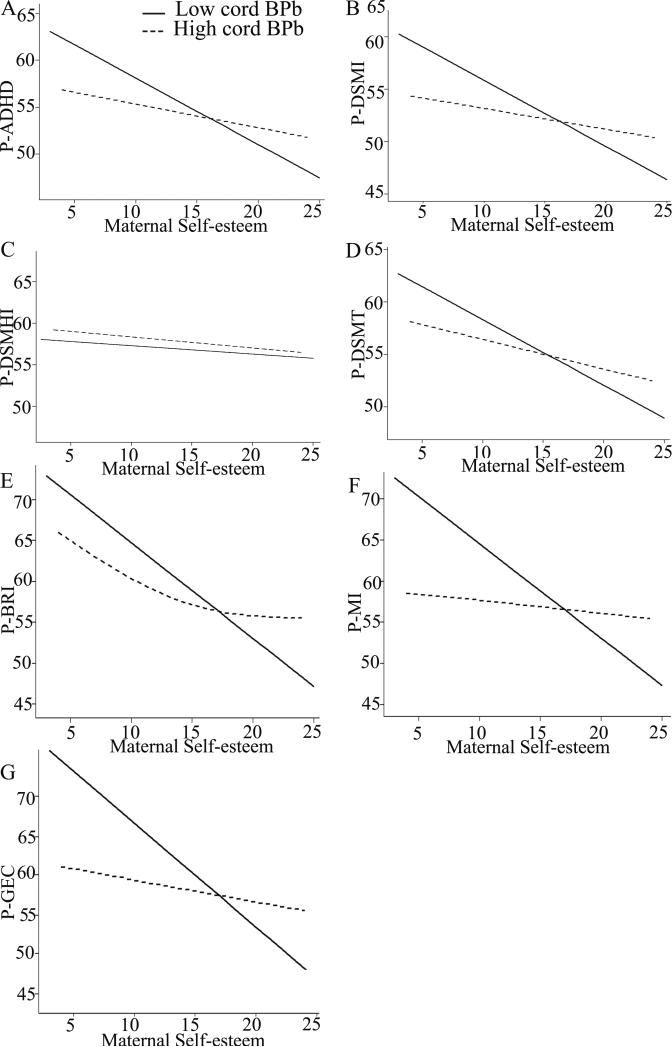Figure 1.
Adjusted associations between maternal self-esteem and school-age-children's behavior T-scores when stratified by cord blood lead. P-ADHD (A), P-DSMI (B), P-DSMHI (C), P-DSMT (D), P-BRI (E), P-MI (F) and P-GEC (G). Comparison of the lowest quartile of cord blood lead (P1-P25, full line) with the highest 3 quartiles (P25-P100, dotted line). Among the low cord blood lead (P1-P25) groups, the data showed significantly inverse association between maternal self-esteem and T-scores except for the P-DSMHI scale. However, the effect was negligibly small among the high lead (P25-P100) groups. Models were adjusted for family economic status, marital status, maternal education and age, child's age and sex, and children's current blood lead levels. BPb: blood lead. N=102.

